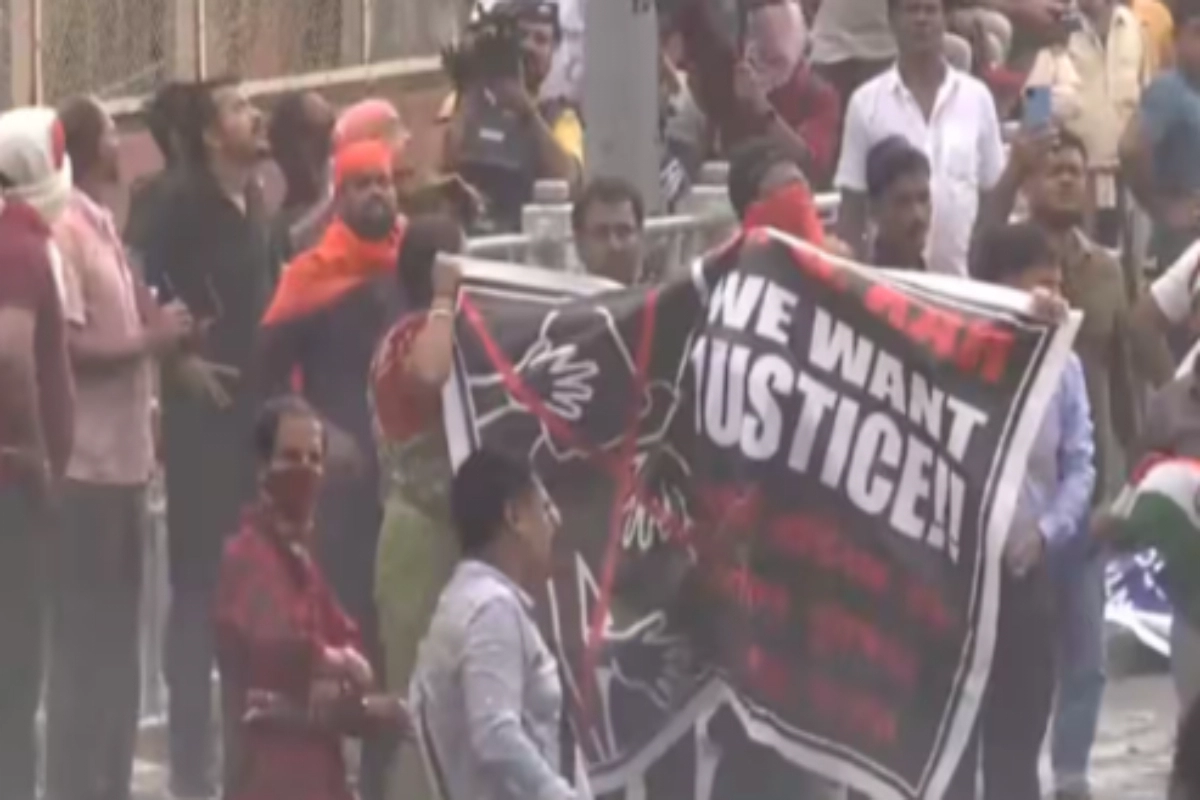Kolkata Rape Case: Streets in West Bengal on Tuesday witnessed pitched battles and running street fights with police firing tear gas and water cannons on hundreds of protesters marching towards the state secretariat, Nabanna. Demanding the resignation of Chief Minister Mamata Banerjee over the rape and murder of a doctor and the alleged failure of the state to ensure the safety of women, the demonstrators were met with heavy resistance from the police. The situation was very soon replaced by violence from the peaceful protests, reflecting a mounting level of unrest in the state.
Protesters Defy Government Ban and March Towards Nabanna
The incident unfolded with the protesters, belonging to the Paschim Banga Chhatra Samaj, taking out a procession from different parts of Kolkata and Howrah from around 12:30 pm. It was on Monday as well that the government had turned down the proposal for the march, following which students hit the streets despite the government’s permissionless marching, waving the Indian flag and shouting anti-government slogans. The government had cited the UGC examination in the city and the protected status of Nabanna as the reasons for not allowing the march.
As the marchers reached some distance towards the Howrah Bridge, at around 1:00 pm, police tried to disperse the crowd with the help of water cannons, but the entire drama turned into a fiasco when protesters swooped down from both sides and started pelting stones at the police. There were also tussles between police and protesters at Santragachhi, Howrah Maidan, and Foreshore Road. They turned different parts of the city into battlefields, as personnel from both groups hurled bricks at one another. They also indulged in stone-pelting indulged and scurried for cover when both the police and the protesters took up different positions to regain control. Thereafter, they resorted to lathi-charge and lobbed tear gas shells.
Chaos at Howrah Maidan
The most intense confrontation happened in Santragachhi, where agitators broke a barricade and the police finally retaliated. They pelted showers of stones onto the police, who then had to resort to using tear gas and water cannons. In another incident at Howrah Maidan, two policemen were beaten with sticks, one receiving head injuries in the chaos at Santragachhi.
The police, who had an idea that trouble was brewing, had spread across the area in hundreds along with anti-riot vehicles. Barricades have been stretched across the Kona Expressway, Howrah Bridge, and every such thoroughfare and bylane leading to Nabanna as a preventive measure. However, the protesters took out a march defying the barricades and managed to reach close to the state secretariat, leading to enhanced clashes.
Trinamool Congress Blames ABVP for Engineering the Protest
The march was organized by Paschim Banga Chhatra Samaj, pegged by the police to be affiliated with a political party, which the report declined to identify. Chhatra Samaj leader Sayan Lahiri has conceded that he belongs to BJP but that the rally was not motivated by political reasons. But the ruling party Trinamool Congress blamed the ABVP, the student wing of Rashtriya Swayamsevak Sangh, an ideological parent to BJP, for “engineering” the march.
Tension has prevailed in West Bengal since the rape and murder sparked mass demand for the resignation of Chief Minister Mamata Banerjee. Protests led by the West Bengal Junior Doctors’ Front, consisting of a general body of medicos from across the state, carried on daily meetings, collected funds, and communicated with supporters through WhatsApp groups. They have been undeterred by the many challenges that have come their way in this fight, such as an attempt to stop the protest by the hospital administration and campus vandalization by mobs.
Superintendent of Police Praveen Tripathi Calls for Calm Amid Violent Clashes
This was so, because the nature of the clashes was too violent and brutal, and the police are still counting the number of the injured personnel. Superintendent of Police Praveen Tripathi described the situation to be too tough for police personnel and requested the protesting crowd to stop blocking the national highway to end the disturbances.
The violence has acutely exposed the considered resentment in Bengal against the issue that the government is indifferent to the question of women’s safety and law and order. As the agitation prevails, the state is precariously balanced on high alert, with possibilities of more violence erupting anytime. It, therefore, emphasizes the importance of discussions and feasible plans to govern the issues of the protestors to help bring a sense of tranquility back in the state.


